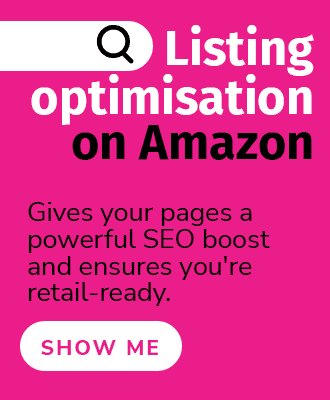At eCommerce Nurse we offer support for Amazon sellers and vendors in global marketplaces. We also employ certified, native translators to ensure you connect with your local audience and actually convert — wherever you sell. At our company, we do not use machine-based translations as part of our service offering. Prospective clients sometimes ask us why we use certified, human translators. The answer is quite simple. Machine-based translations do not produce quality, comprehensive work like qualified and experienced real people can.
In the growing global e-commerce market, the world is getting smaller and more accessible. For example, Amazon sellers in the UK can list their products in Italy or France, thanks to continual expansion and services like the European Fulfilment Network (EFN). Amazon continues to expand across borders, too. This year alone, Amazon has added the Netherlands and Sweden. As of 2020, Amazon has 17 marketplaces worldwide, with the majority of these locales offering the option for third-party sellers to list items and sell in that particular country.
If global expansion is something you are considering, you will undoubtedly need translation services. The first step, of course, is listing optimisation for your catalogue of products in your native language. Once that is complete, you might consider quickly popping your text into a machine-based translation tool, such as Google Translate. It’s fast and free. But that doesn’t mean it’s going to successfully sell your products. You have probably seen listings on Amazon that are obviously translated quickly and poorly. We probably don’t have to tell you, but these listings do not perform well. With more than 350 million listings globally, customers can easily find a better product that meets their needs, answers their questions, and earns their trust enough to purchase it.
Which brings us to the reasons why human translations are far superior and the clear way forward for success in e-commerce. Here are 5 reasons to avoid machine-based translations for online selling.
1) Accuracy and context
Machine-based translations rely on data and repetition for accuracy. They take the most common vocabulary words that are used in a certain language and place these in a variety of contexts, assuming they are most likely to be right. In this sense, your translations become a probability game for the correct context of a word.
For example, if your product is a face mask, and you use the English word “protect” in your description, the machine-based translation may replace that word with the equivalent synonym of “conserve,” “cushion,” or “shelter” in another language. These words all have different and subtle meanings. But the machine is not going to know which actually makes sense in the context of your specific product. Though certain words are synonymous with others, the context clearly matters.
This is one of the most direct ways having a human translator can benefit you. Native, certified translators will have the knowledge, nuance, and ability to use words and phrases that will actually make sense in the context of your product.
2) Localisation and cultural competence
So much of the way we speak and convey meaning is an effect of our culture. This can also be a huge hurdle when using machine-based translations. The best way to accelerate your sales on Amazon is ensuring wide and deep keyword coverage for SEO. Most likely, your fantastic list of English keywords that you (or your agency) compiled from tools and research is not going to yield results when directly translated word-for-word. This is because it won’t be localised. Even in English-speaking countries, we must localise words and phrases to achieve success in Amazon’s algorithm.
For example, you might be selling a “football boot” in the United Kingdom. If you sell the exact same product in America, however, it will be called a “soccer cleat.” Neither phrase is going to yield results unless used in the correct cultural context. And if it can be this different for English-speaking countries, can you imagine how complex it is for entirely different languages?
This goes even deeper if you think about all of the little differences in cultures. These can include units of measure, political or gender issues, derogatory statements, offensive phrases, literal vs. figurative language, and more.
As an example, in 2009, HSBC bank once used mis-translations of their catchphrase, “Assume Nothing” all around the world. Problematically, this resulted in some countries seeing, “Do Nothing” as the slogan. It cost HSBC more than $10 million to redo the campaign and correct the mistake.
Our cultures are so tied to language that it’s problematic for machine-based translations. They simply cannot properly localise phrases and lack that human touch. A skilled human translator won’t make mistakes with localisation, ensuring your listings don’t sound silly, nonsensical, inaccurate, or offensive.
3) Professionalism
Competition on Amazon is fierce and continues to grow. Just as you want to stand out from competitors in your home country, you want to be able to beat the competition anywhere you operate. It’s important to get a proper foothold in emerging markets, and excel and grow in areas where you already have a presence. You have very little chance of doing this if your product listings are not professional. This factors into many areas and you have undoubtedly seen poor examples of this on Amazon: Sellers using poor grammar, spelling and punctuation errors, or just having little to no available information for customers. You can always spot a bad translation with these markers, too.
Customers are unlikely to purchase a product that isn’t compelling and doesn’t answer their questions and concerns upfront. Customers cannot give you a five-star rating or positive review if they do not complete a purchase. As a result, you’re unlikely to succeed in the Amazon A10 algorithm. By using certified, professional, human-based translation, you can ensure you look professional and be seen as a voice of authority for the products you sell. A cohesive, SEO-based, accurate translation inspires customer trust, loyalty, positive reviews, and increases conversion all across your brand.
4) Certification standards
Machine-based translation has come a long way. It’s so much easier these days to order at a restaurant or ask for directions when you’re traveling the world. But this is where machine-based translation excels. Not in a business setting. When you rely on machine-based translation to achieve your marketing and business goals, it’s unlikely to be a successful long-term strategy.
It takes more than just being a native speaker to correctly translate marketing copy. Translation requires a complex and dynamic skillset. Becoming a certified translator is a formal process involving state-approved and regulated qualifications. These include language skills to comprehend the source text, techniques for performing an accurate and cohesive translation, and quality outcomes for the target language, among other aspects.
At eCommerce Nurse, we go a step further. Not only have our translators attained a range of advanced degrees in translation studies, they also have experience as ex-Amazon employees or experience translating for Amazon and e-commerce businesses all over the world. Having the skills to make content succeed on Amazon is an integrated component of our business. Just like we use proven, SEO-driven methods to create compelling content for search and conversion in English, we can also do so in any supported locale, thanks to our team of translators.
5) Cost, time and resource investment
It’s easy to use free or very low-cost machine-based tools. The internet is full of them and they’re very convenient. Many businesses think professional, human translation will be expensive or take a great deal of time. But this is not necessarily the case. Especially when you factor in how costly mistakes, errors, and sloppiness can be for your business. Perhaps your translation was free and quick, but if it doesn’t result in the desired sales, is it really effective?
Likewise, when you take into account all of the components that may need translation in multiple languages (titles, feature bullets, product descriptions, A+ Content, Brand Stores, image text, etc.), there is a lot to manage. You’ll want a cohesive tone, proper branding, integrated advertising and marketing plans, and most importantly, content that succeeds and converts. Bottom line: If you use machine-based translation, you will cut into your margins significantly over time.
If you have (or are considering) investing in the legal and logistical implications of selling in multiple countries, you should focus on getting a return on your investment. Long-term success starts with quality, human-generated translations.
At eCommerce Nurse, we customise our packages to your needs. We can support your business goals in all locales professionally and affordably. If you have international expansion plans and content needs, we can help. Contact us so we can support your business goals and establish a plan for success.




